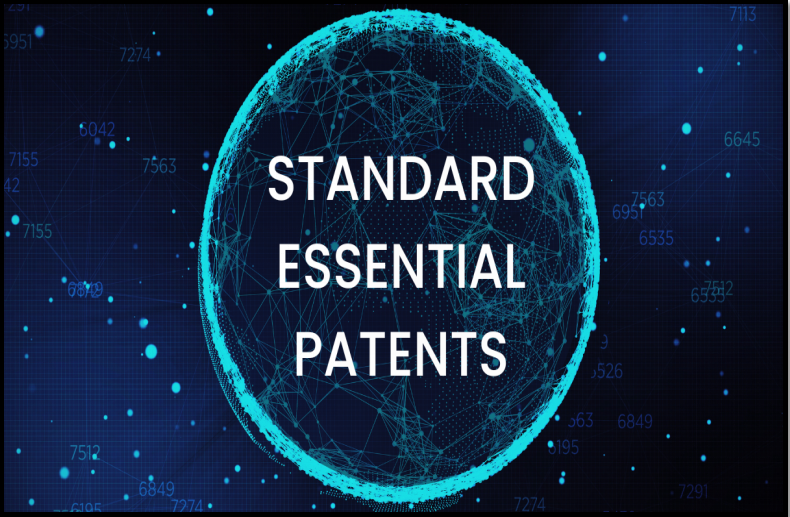THE JUDICIARY’S SHADOW OVER STANDARD ESSENTIAL PATENTS
SYLLABUS:
- GS 2:Government policies and interventions for development in various sectors and issues arising out of their design and implementation.
Focus:
- There is a possible crisis brewing in India over the manner in which certain technology companies are wielding ‘standard essential patents’ (SEP) against the telecom manufacturing sector in India.
Source: Patentskart
A Standard Essential Patent (SEP) is a patent granted for technological invention which is essential for implementation and working of a standard. Patents which are essential to a standard and have been adopted by a Standard Setting Organization (SSO) are known as SEPs.
Understanding SEPs
- Nature of SEPs:Standard Essential Patents are crucial for technology that adheres to industry standards, ensuring devices from different manufacturers can operate together seamlessly.
- Examples and Relevance:Key technologies like CDMA (Code Division Multiple Access), GSM (Global System for Mobile Communications), and LTE (Long Term Evolution) are standardized through SEPs, which allow for widespread compatibility across telecommunications devices.
- Importance of Compliance: Compliance with these standards is not optional but mandatory for manufacturers to ensure their devices function properly in broader systems and networks.
- Market Impact: SEPs facilitate a competitive and diverse market where different brands can thrive without compatibility issues.
- Regulatory Challenges:Managing these patents involves balancing incentives for innovation with anti-monopoly concerns, often regulated through FRAND (Fair, Reasonable, and Non-Discriminatory) terms.
Role of the Judiciary in SEP Regulation
- Legal Interpretation:Courts interpret the scope and application of SEPs, influencing how standards are implemented industry-wide.
- Enforcement of FRAND:The judiciary plays a key role in enforcing FRAND commitments, which are designed to prevent SEP holders from exploiting their position.
- Dispute Resolution:Judicial systems often settle disputes regarding SEP usage, which can involve complex negotiations between international firms and local businesses.
- Impact of Legal Precedents: Decisions made in high-profile SEP cases can set precedents that affect future technology and business practices globally.
- Critiques of Judicial Approach: There are concerns regarding delays and inconsistencies in judicial handling of SEPs, which can impede technological advancement and economic growth.
Global Responses and Regulatory Practices
- Global Enforcement Examples: Qualcomm, for instance, has been subjected to significant fines across various jurisdictions (China, South Korea, Europe) for violating antitrust laws with its SEP practices.
- Indicator of SEP Misuse: These fines serve as a global barometer indicating the seriousness with which countries treat SEP abuses.
- Appeal Processes:The overturning of some of these fines on appeal highlights the legal complexities and differing interpretations of what constitutes fair use of SEPs.
- Impact of Fines:While punitive, fines also prompt SEP holders to adjust licensing strategies to avoid future legal challenges.
- Comparison and Lessons:By examining how different countries handle SEP infringements, India can better formulate its regulatory approach.
Issues in Self-Regulation and Transparency
- Role of Standard Setting Organizations (SSOs):SSOs, often dominated by major tech companies, play a significant role in determining what constitutes an SEP.
- Lack of Transparency: The process of setting standards is criticized for its opacity, making it difficult for newer entrants or smaller players to influence decisions.
- Patent Holdup: There’s a risk of ‘patent holdup’, where SEP holders demand exorbitant fees from manufacturers, which could stifle innovation and competition.
- Failure of Self-Regulation: Instances of regulatory failure have been noted, where self-regulating mechanisms did not prevent abusive practices.
- Need for Clear Guidelines:The complexities of SEP management call for clearer guidelines and more accountable regulatory practices to ensure fair competition.
Effects of Judicial Inactivity and Activism
- Competition Commission of India’s Role:Starting with investigations into Ericsson by the CCI (Competition Commission of India), Indian courts have been pivotal in addressing competition concerns related to SEPs.
- Protracted Litigation:Lengthy legal battles, such as those involving Ericsson, illustrate the slow pace at which critical economic issues are resolved in the judiciary.
- Interim Measures and Their Impact:The practice of requiring deposits from manufacturers during litigation can financially strain companies, affecting their operational capacity.
- Influence of Judicial Decisions: Judicial outcomes significantly influence business environments, potentially deterring investment in the manufacturing sector.
- Dual Role of Judiciary:The Indian judiciary’s dual role of curbing anti-competitive practices while ensuring technological and business innovation presents a significant challenge.
Recommendations for Future Actions
- Regulatory Framework Enhancement: There’s a pressing need for India to establish a robust regulatory framework for managing SEPs, drawing from global best practices.
- Balancing Innovation and Competition:The framework should balance the need to incentivize innovation (through patent protections) and the need to maintain competitive markets.
- Legislative Measures:Introducing specific legislation to manage SEP issues could provide clarity and predictability for all market participants.
- Government as a Mediator:The government could take on a mediating role between international SEP holders and domestic manufacturers to ensure fair licensing terms.
- Incentives for Compliance: Implementing incentives for adherence to fair practices and penalties for violations can encourage healthier competition and innovation in the technology sector.
This detailed exposition highlights the complexities of regulating Standard Essential Patents within the judicial framework and emphasizes the importance of timely and effective government intervention to safeguard and promote national interests in the technology sector.
Source:The Hindu
Mains Practice Question:
Examine the challenges posed by Standard Essential Patents (SEPs) in the context of India’s telecommunications industry. Discuss the role of the judiciary in regulating SEPs and suggest measures that the government should take to ensure fair and competitive practices. Consider international responses to provide a comparative perspective.




